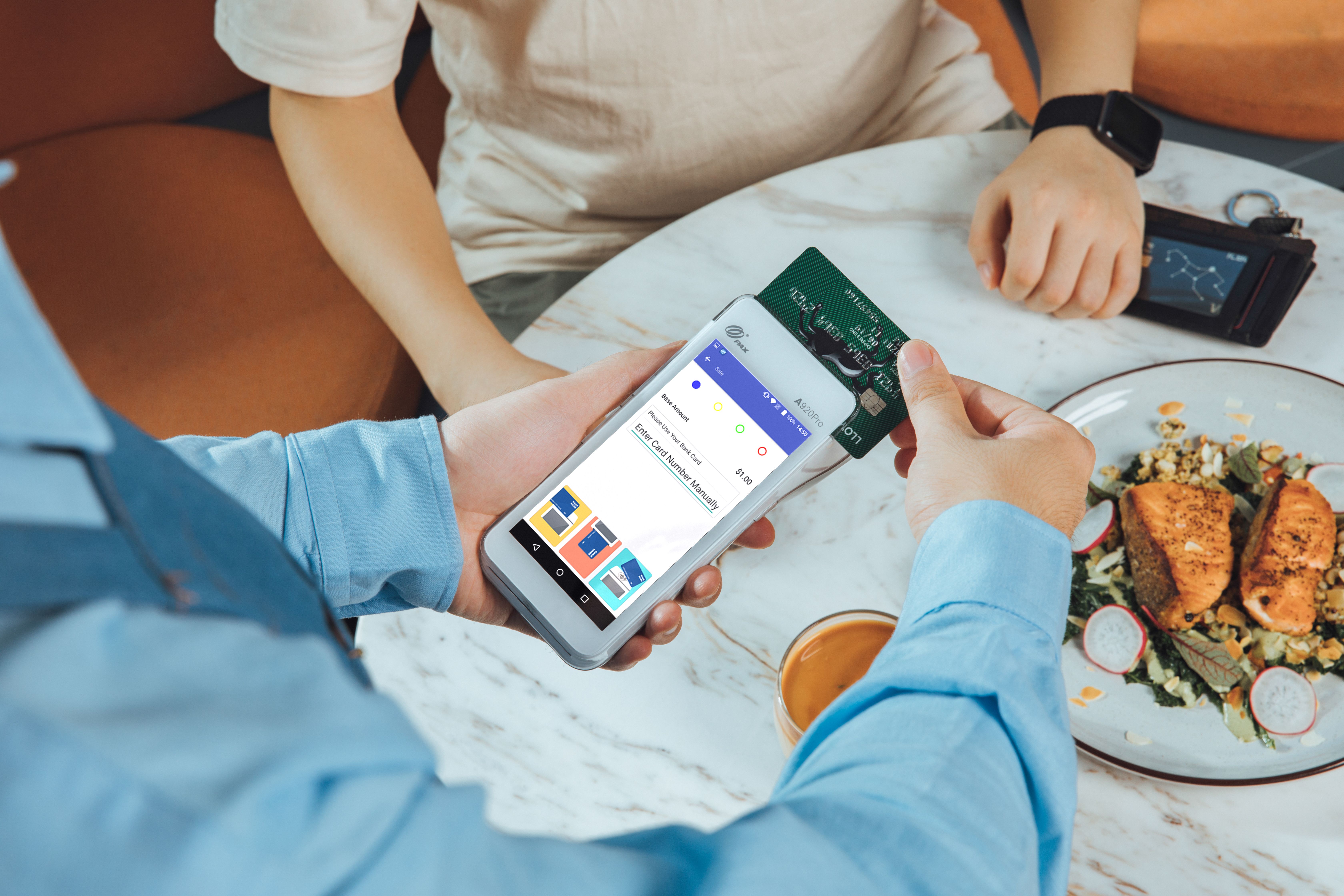Providing a high-quality customer experience is your greatest asset for earning consumer trust. Every step of the in-store journey deserves special attention, and payment is no exception. A quick and seamless checkout process leaves customers satisfied and enhances their loyalty. Looking to optimize payments at your point of sale? Here are our tips!
Traditional In-Store Payment Solutions
Choosing the right payment solution can boost the performance of your physical store. Here’s an overview of the traditional options available for managing payments.
Electronic Payment Terminal (EPT)
The EPT, or credit card reader, is a device that enables card payments. Customers insert their card and enter their PIN to authorize the transaction. This solution appeals to customers who prefer this payment method, as 84% of French consumers use bank cards to pay for in-store and online purchases.
In addition to accommodating customers without cash and ensuring secure transactions, this device protects merchants against fraud. Once a transaction is recorded via the machine, it cannot be reversed.
Cash Register Coin Dispenser
This equipment is essential for stores where cash payments are common. It saves time for merchants, eliminating the need to count coins and bills manually. The machine handles this task, freeing up time to serve customers.
A coin dispenser also detects counterfeit bills and reduces errors at the register. This improves in-store payment efficiency and provides added security against theft.
New Payment Technologies for In-Store Transactions
Innovative payment technologies are transforming the in-store shopping experience. These solutions reduce errors, enhance security, and speed up transactions. Here are the latest payment options to adopt for a better customer experience.
Contactless Payment: Time-Saving in Stores
Contactless payment is a game-changer for in-store transactions. Customers can pay by holding their bank card within 4 cm of the merchant’s terminal.
This technology, based on short-range wireless communication (NFC, Near Field Communication), reads credit or debit card data for payment.
The main advantage of this solution is its speed. Customers no longer need to insert their card into the terminal or enter a PIN for amounts below €50. Checkout becomes faster and smoother, saving time for even the busiest customers.
Contactless payments also reduce the need for cash handling and enable faster transactions. It’s an ideal solution to attract new customers and retain regular ones.
Mobile Payment: Benefits for Merchants and Customers
Mobile payment allows customers to pay via their smartphones, without needing cash or a bank card. This method is especially appealing to younger generations.
Mobile payments are projected to become the leading payment method in France for both online and in-store purchases. The amount owed is directly debited from the customer’s bank account.
If you own a business like a restaurant, mobile payment can boost sales. It enables customers to pay without visiting the register, thanks to solutions like soft POS systems. This payment method is simple, fast, and hygienic, which customers appreciate.
Mobile payment also provides valuable insights into purchases at your store. Through the dedicated app, you can access customer data to understand trends and preferences.
Market Pay’s SoftPOS Payment Solution: Transform Your Smartphone into an EPT
Market Pay’s SoftPOS payment solution allows merchants to accept card payments using just their smartphone—no dedicated payment terminal required. By integrating SoftPOS, your phone becomes a payment terminal (EPT).
This solution works seamlessly with contactless payments. Simply download the Market Pay SoftPOS app and open it whenever a customer wants to pay by card.
SoftPOS is ideal for small and medium-sized businesses that may not be able to invest in a traditional terminal. Excluding the cost of the smartphone, it’s a cost-effective option that helps manage cash flow more efficiently.
Large retailers can also benefit by using SoftPOS alongside traditional EPTs to handle high activity periods, enable mobile payments, and reduce checkout lines. It’s also perfect for event-based sales where flexibility and performance are key.
SoftPOS accepts payments wherever you are—a significant advantage for businesses on the move. For instance, if you’ve recently opened a restaurant and offer delivery services, you can easily take your payment terminal with you and use NFC for transactions.
Additionally, if you manage multiple locations in France, our NFC-enabled contactless payment solution via PayWish simplifies tracking sales across stores.
Securing In-Store Payments: Technologies and Regulations
Payment security is crucial for both customers and merchants. With the growing use of payment terminals, businesses must stay informed about the latest security practices.
The Role of PSD2 in Payment Security
The Payment Services Directive 2 (PSD2) enforces strong customer authentication (SCA) for transactions made with EPTs, significantly reducing the risk of fraud and safeguarding sensitive customer information.
This regulation applies to payments exceeding €30 and requires merchants to implement strong authentication methods. It’s advisable to work with a specialized provider, as the process can introduce friction into the customer journey.
Protecting Customer Data with Tokenization
Tokenization is a robust system designed to protect sensitive information, such as customer data, by replacing it with unique tokens. This ensures a high level of security.
Even if hackers gain access to the data, it becomes useless. Tokenization is cost-effective compared to encryption and requires fewer resources to implement.
The Future of In-Store Payments: Trends to Watch
In-store payments are set to evolve further with ongoing technological advancements. Here are some trends to keep an eye on to stay ahead of the competition.
Biometric Payments: Towards an Ultra-Personalized Customer Experience
Biometric payment, though not yet widespread in France, offers promising opportunities. Customers can approve transactions using unique biometric features like fingerprints, voice, or facial scans.
This method enhances payment security by leveraging unique customer characteristics and simplifies the in-store experience by eliminating the need to enter PINs or passwords.
The Rise of Omnichannel Payments
Unified commerce is a major asset for brands with both physical stores and online shops. Omnichannel payment solutions provide customers with a seamless experience between in-store and e-commerce transactions.
Merchants can synchronize online and in-store payment information and enable QR code payments. These solutions support systems like in-store "click and collect."
Enhancing Payments with AI and Data
Today’s customers expect a personalized shopping experience tailored to their needs. Artificial intelligence simplifies the analysis of in-store payment habits. The future of payments lies in smart terminals.
These devices will suggest options like installment payments or deferred payments based on customer behavior. They will also provide merchants with valuable insights into consumer preferences and trends, both domestically and internationally.





